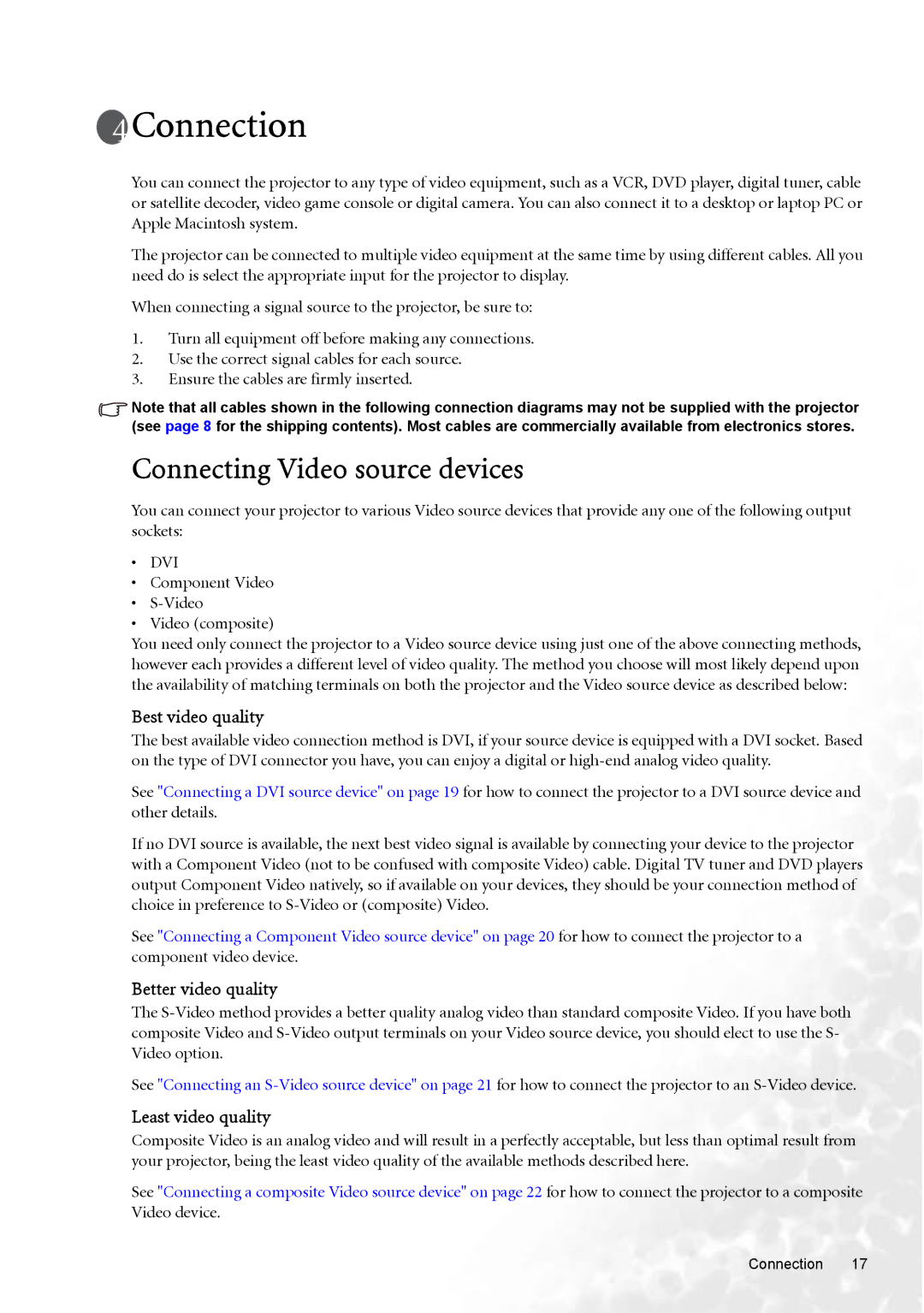
 Connection
Connection
You can connect the projector to any type of video equipment, such as a VCR, DVD player, digital tuner, cable or satellite decoder, video game console or digital camera. You can also connect it to a desktop or laptop PC or Apple Macintosh system.
The projector can be connected to multiple video equipment at the same time by using different cables. All you need do is select the appropriate input for the projector to display.
When connecting a signal source to the projector, be sure to:
1.Turn all equipment off before making any connections.
2.Use the correct signal cables for each source.
3.Ensure the cables are firmly inserted.
![]() Note that all cables shown in the following connection diagrams may not be supplied with the projector (see page 8 for the shipping contents). Most cables are commercially available from electronics stores.
Note that all cables shown in the following connection diagrams may not be supplied with the projector (see page 8 for the shipping contents). Most cables are commercially available from electronics stores.
Connecting Video source devices
You can connect your projector to various Video source devices that provide any one of the following output sockets:
•DVI
•Component Video
•
•Video (composite)
You need only connect the projector to a Video source device using just one of the above connecting methods, however each provides a different level of video quality. The method you choose will most likely depend upon the availability of matching terminals on both the projector and the Video source device as described below:
Best video quality
The best available video connection method is DVI, if your source device is equipped with a DVI socket. Based on the type of DVI connector you have, you can enjoy a digital or
See "Connecting a DVI source device" on page 19 for how to connect the projector to a DVI source device and other details.
If no DVI source is available, the next best video signal is available by connecting your device to the projector with a Component Video (not to be confused with composite Video) cable. Digital TV tuner and DVD players output Component Video natively, so if available on your devices, they should be your connection method of choice in preference to
See "Connecting a Component Video source device" on page 20 for how to connect the projector to a component video device.
Better video quality
The
See "Connecting an
Least video quality
Composite Video is an analog video and will result in a perfectly acceptable, but less than optimal result from your projector, being the least video quality of the available methods described here.
See "Connecting a composite Video source device" on page 22 for how to connect the projector to a composite Video device.
Connection 17
